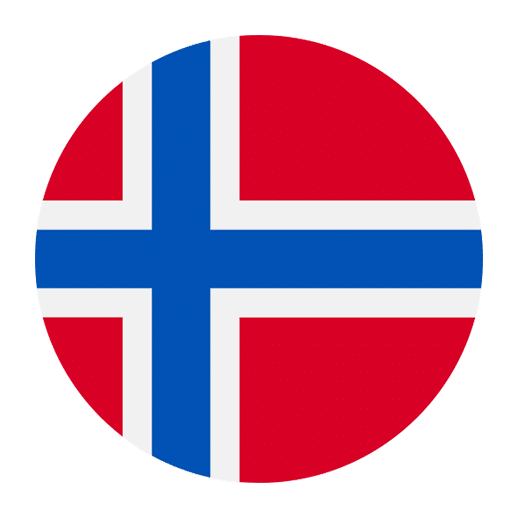Learning a new language can be a thrilling adventure, especially when you discover the nuances and subtle distinctions between words that might seem similar at first glance. In Norwegian, two such words are “slott” and “slått.” While they may sound somewhat alike to non-native speakers, they carry very different meanings. Understanding these differences is crucial for effective communication and avoiding misunderstandings. In this article, we will explore the meanings, usages, and cultural contexts of “slott” and “slått” in Norwegian.
Understanding “Slott”
Slott is the Norwegian word for a “castle.” It refers to large, often historic buildings that were typically constructed as fortified residences for nobility or royalty. Similar to the English word “castle,” a “slott” can evoke images of grand architecture, moats, and towering walls.
Historical Context
Norway, like many European countries, has a rich history of castles. These structures were often built during the medieval period and served various purposes, from royal residences to military strongholds. Examples of famous Norwegian castles include Akershus Fortress in Oslo and Bergenhus Fortress in Bergen. Understanding the historical context of these castles can enhance your appreciation of their significance in Norwegian culture.
Usage in Modern Norwegian
In modern Norwegian, the word “slott” is used similarly to how “castle” is used in English. It can refer to any large, impressive building, not just those with historical significance. For example:
– “Vi besøkte et gammelt slott i helgen.” (We visited an old castle over the weekend.)
– “Kongen bor i et vakkert slott.” (The king lives in a beautiful castle.)
Idiomatic Expressions
Norwegian, like any language, has idiomatic expressions that include the word “slott.” These expressions can offer deeper insights into how the word is used culturally. For instance:
– “Bygge luftslott” translates to “building castles in the air,” which means to have unrealistic dreams or plans.
– “Konge på slottet” (king of the castle) can be used to describe someone who feels very important or powerful in a particular situation.
Understanding “Slått”
On the other hand, slått in Norwegian has an entirely different meaning. It refers to a “clearing,” specifically in the context of haymaking or mowing. This term is deeply rooted in agricultural practices and is used to describe areas of land that have been cleared for the purpose of cutting grass or hay.
Agricultural Context
Agriculture has always been an integral part of Norwegian life, especially in rural areas. The word “slått” is derived from the verb “å slå,” which means “to mow” or “to cut.” Historically, farmers would clear areas of land to create “slåtter” (the plural form of “slått”) for haymaking. This hay would then be used to feed livestock during the harsh Norwegian winters.
Usage in Modern Norwegian
While the traditional practice of haymaking has diminished with the advent of modern farming techniques, the word “slått” is still used in contemporary Norwegian. It can refer to any area that has been cleared for mowing, whether for agricultural purposes or other reasons. Examples include:
– “Vi må rydde slåtten før vinteren.” (We need to clear the hayfield before winter.)
– “Denne slåtten er klar for å bli slått.” (This clearing is ready to be mowed.)
Folklore and Music
Interestingly, “slått” also has a place in Norwegian folklore and traditional music. In Norwegian folk music, a “slått” is a type of tune or melody, often played on the Hardanger fiddle. These tunes are usually associated with traditional dances and are an essential part of Norway’s cultural heritage.
Common Mistakes and Confusions
Given the similar pronunciation of “slott” and “slått,” it’s easy for language learners to confuse these words. However, their meanings are so distinct that using one in place of the other can lead to misunderstandings. Here are some tips to avoid common mistakes:
Pronunciation Tips
– “Slott” is pronounced with a short “o” sound, similar to the “o” in “lot.”
– “Slått” has a long “å” sound, which can be tricky for English speakers. It’s pronounced like the “o” in “more” but with a slightly rounded lip shape.
Practicing these pronunciations can help you differentiate between the two words more clearly.
Contextual Clues
Using contextual clues can also be helpful. If you’re talking about grand buildings or historical sites, “slott” is likely the word you need. If the discussion is about agriculture, haymaking, or clearings, then “slått” is the appropriate term. Paying attention to the context can significantly reduce the chances of confusion.
Practical Exercises
To solidify your understanding of “slott” and “slått,” here are a few practical exercises:
Exercise 1: Fill in the Blanks
Choose the correct word (slott or slått) to complete the sentences:
1. The medieval ________ we visited was incredibly well-preserved.
2. Every summer, we clear the ________ to prepare for haymaking.
3. The king’s ________ is located in the capital city.
4. Traditional Norwegian music often features a ________.
Answers:
1. slott
2. slått
3. slott
4. slått
Exercise 2: Translation Practice
Translate the following sentences from English to Norwegian, using either “slott” or “slått”:
1. We spent the afternoon exploring the castle grounds.
2. The clearing was full of wildflowers.
3. They performed a traditional dance to a slått.
4. The ancient slott has a rich history.
Answers:
1. Vi tilbrakte ettermiddagen med å utforske slottets grunn.
2. Slåtten var full av villblomster.
3. De fremførte en tradisjonell dans til en slått.
4. Det gamle slottet har en rik historie.
Cultural Significance
Understanding the cultural significance of “slott” and “slått” can further deepen your appreciation of these words.
Slott in Norwegian Culture
Castles in Norway are not just historical relics; they are symbols of the country’s rich past and architectural prowess. They often serve as museums, tourist attractions, and venues for cultural events. Visiting a “slott” in Norway can be a journey through time, offering insights into the lives of past monarchs and the country’s strategic military history.
Slått in Norwegian Culture
The concept of “slått” is deeply embedded in Norwegian rural traditions. Even though modern agriculture has reduced the reliance on manual haymaking, the cultural practices surrounding it are still celebrated in festivals and music. The “slått” tunes in folk music are a testament to this heritage, often played at cultural gatherings and traditional celebrations.
Conclusion
In summary, “slott” and “slått” are two distinct words in Norwegian that highlight different aspects of the country’s culture and history. While “slott” refers to magnificent castles with historical and architectural significance, “slått” pertains to clearings used in agriculture and has a place in traditional music. By understanding the meanings, pronunciations, and cultural contexts of these words, language learners can improve their Norwegian vocabulary and gain a deeper appreciation for the nuances of the language.
Remember, the key to mastering any language lies in paying attention to details and practicing regularly. So, the next time you come across a grand castle or a picturesque hayfield in Norway, you’ll know exactly which word to use!

